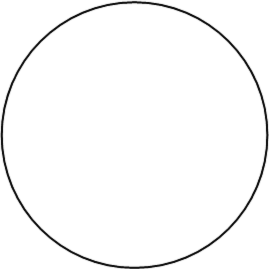Cutting up
This task is about cutting a square and a circle into equal parts.
|
1)
|
Alli drew lines to divide this square into 3 equal-sized pieces.
a) Are all 3 pieces equal-sized? yes / no / don't know (Circle one)
b) Show how you would divide the square into 3 equal-sized pieces.  |
 |
|
2)
|
Josef drew lines to divide this circle into 4 equal-sized pieces.
a) Are all 4 pieces equal-sized? yes / no / don't know (Circle one)
b) Show how you would divide the circle into 4 equal-sized pieces.  |
 |



